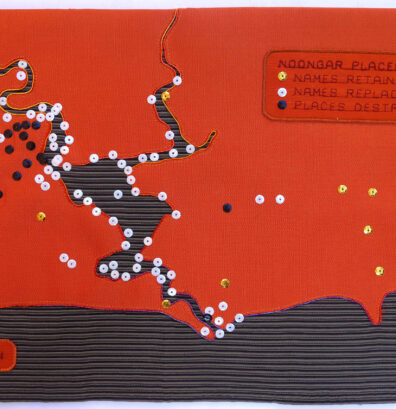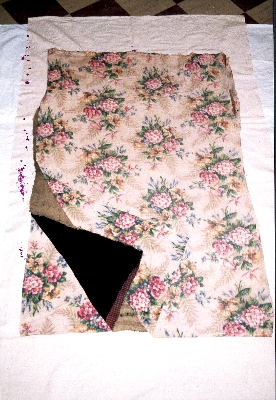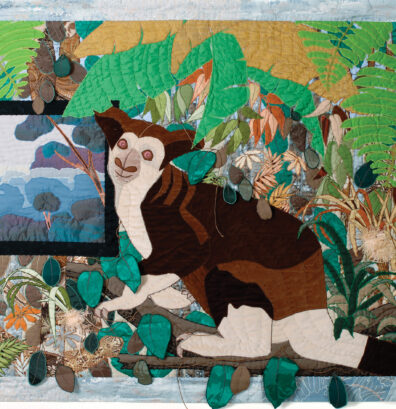-
Owner:
Western Australia Museum -
Location:
Perth WA Australia -
Maker:
Unknown -
Pattern:
Animal Skins -
Pattern:
Pieced
History
The cloak was collected from the Cranbrook District of South West Western Australia pre 1900. Donated to the Musum by SJ Tunney. [E2137]
Skin cloaks were termed 'booka'. They were made from the skins of kangaroos, possum, sometimes also the brush wallaby. The number of skins used to make a cloak varied, depending on the size of the skin and the size of the wearer. The literature states that Aborigines preferred the skins of female kangaroos as they were softer and lighter. Women's cloaks, however, were bigger and were probably made from the skins of male kangaroos which were larger. The skins were pegged out to dry and the flesh scraped off, either with a piece of sharp stone such as quartz or with the woman's knife which was a piece of quartz, glass, or a kangaroo tooth, attached to a stick with gum. The skin was rubbed with grease to make it pliable; red ochre or ashes were sometimes rubbed on the skin while it was being prepared. The holes for sewing the skins together were made by a pointed stick or pointed bone and they were joined using kangaroo tail sinews or rushes. From the literature it appears that women were responsible for preparing the skins and making the cloaks although one source says men prepared the skins. The cloaks were apparently worn with the fur to the inside but in wet weather the cloaks were worn fur side out so rain would run off the fur and not penetrate. Contemporary illustrations show that men wore the cloaks so that one arm was left free to carry weapons etc.
Description
Kangaroo skin cloak of seven gores made from the skins of seven grey kangaroos (Macropus fuliginosus). The skins vary in size and shape, the inner five are roughly triangular. The cloak is edged with a series of loops, through one of these near the collar is a piece of cloth which appears to have tied the cloak together. The skins are sewn together with two sorts of linen or cotton thread. In a small diamond-shaped gusset at the back of the neck there are some stitches of sinew. The skins are sewn together by means of a small hem which was turned back on to the fur, so stitches went through two layers of skin on each gore. There are some small holes in the skins. The skins are very soft and pliable, and greyish in colour; they vary in size and shape.
Longest part: 800 mm
Acknowledgements
Reference:
S Meagher 1973 MA Thesis 'A Reconstruction of the Traditional Life of the Aborigines of the south west of Western Australia'



